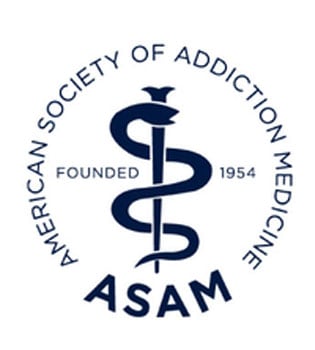EMDR Therapy for Trauma and Addiction

This specialized form of treatment helps the brain reprocess painful memories, reduce distress, and create healthier responses, making it a powerful option for healing both trauma and substance use disorders.
At Hanley Center, EMDR treatment is delivered in a compassionate setting that supports emotional well-being and long-term sobriety.
What Is Eye Movement Desensitization and Reprocessing (EMDR)?
Eye Movement Desensitization and Reprocessing (EMDR) is a form of psychotherapy that is often recommended for those who struggle with post-traumatic stress disorder (PTSD).
This treatment modality involves moving your eyes a specific way while you process or recount past traumatic experiences. The goal of EMDR is to help you heal from past trauma or other distressing life experiences.
History and Development of EMDR
Eye movement desensitization and reprocessing (EMDR) was first developed in 1987 by psychologist Francine Shapiro, PhD.
While walking in a park, Shapiro noticed that specific side-to-side eye movements seemed to lessen the emotional impact of distressing memories. She transformed that observation into a structured, eight-phase therapy and published the first controlled study in 1989.
Throughout the 1990s, additional clinical trials expanded the evidence base, and EMDR gained recognition among mental health professionals worldwide. Today, it is endorsed by organizations such as the World Health Organization and the U.S. Department of Veterans Affairs as an evidence-based treatment for trauma and post-traumatic stress disorder.
TREATMENT MODALITIES
How Does EMDR Work?
EMDR uses a structured eight-phase approach to help change the way a traumatic memory is stored in the brain, reducing and eliminating the problematic symptoms.
The 8 Phases of EMDR Treatment
- Phase 1: History and treatment plan
Share a comprehensive history and gather information about the traumatic experience. - Phase 2: Preparation
Learn EMDR techniques (e.g., coping, stabilization, and regulation skills) to help process difficult emotions. - Phase 3: Assessment
Identify emotions, beliefs, associated negative connotations, and bodily sensations related to the traumatic memory. - Phase 4: Desensitization
Learn and perform eye movements and tapping skills to resolve a charged memory, belief, or trigger. - Phase 5: Installation
Use bilateral stimulation to replace negative cognition with positive cognition. - Phase 6: Body scan
Assess and process any residual somatic symptoms. - Phase 7: Debriefing and closure
Review coping, self-regulation, and self-care skills. - Phase 8: Re-Evaluation
Review progress and identify new needs.
EMDR for Mental Health Disorders
EMDR is a powerful evidence-based therapy designed to alleviate the distress associated with traumatic memories and a range of mental health disorders.
Combining cognitive therapy elements with bilateral stimulation, EMDR helps individuals process and reframe challenging experiences, promoting lasting emotional relief and enhanced well-being.
Key Benefits of EMDR for Mental Health
- Trauma Processing
EMDR specifically targets unresolved trauma, helping individuals safely confront and process traumatic memories. This can lead to a reduction in PTSD, anxiety, and depression symptoms. - Reduction of Anxiety and Depression
By addressing the root causes of emotional distress, EMDR can significantly decrease anxiety and alleviate symptoms of depression, promoting a more balanced emotional state. - Improved Coping Skills
EMDR helps patients develop healthier coping mechanisms and resilience, making it easier to manage stressors and triggers in everyday life. - Enhanced Self-Perception
As patients work through past traumas, they often experience a shift in self-perception, moving from feelings of shame or inadequacy to greater self-acceptance and confidence. - Holistic Healing
EMDR acknowledges the interconnectedness of mind and body, promoting a holistic approach to healing that enhances overall well-being.
EMDR is a structured and empathetic approach that empowers people to reclaim their lives from the grips of mental health disorders, paving the way for meaningful, lasting change and a brighter future.
If you’re ready to explore how EMDR can support your mental health journey, contact our admissions team today at 561-841-1033.
EMDR for Addiction
EMDR treatment is a powerful therapeutic tool that has been proven to help individuals struggling with addiction by addressing the underlying trauma that often fuels substance use.
Addiction frequently stems from unresolved emotional pain, and EMDR works to process these traumatic memories, allowing individuals to heal and break free from harmful patterns.
By using guided eye movements, EMDR helps the brain reprocess traumatic experiences, reducing the emotional charge and making it easier to cope without turning to substances.
For individuals in recovery, EMDR therapy provides a unique path to healing by targeting the root causes of addiction rather than just the symptoms.
EMDR is especially effective for people who have experienced significant stress or trauma, as it helps rewire the brain’s response to those memories. This transformative approach can lead to a more complete, lasting recovery, empowering individuals to rebuild their lives with a sense of calm, control, and resilience.
At its core, EMDR helps to restore balance and supports people on their journey to long-term wellness.
The Role of Trauma in Addiction
Individuals with PTSD from experiences like bullying or emotional abuse often face a higher risk of developing substance use disorder. They may turn to alcohol or drugs to numb their pain, manage PTSD symptoms, or escape troubling thoughts.
The Benefits of EMDR for Substance Abuse
While EMDR was initially developed to help people with PTSD, it’s also proven effective for those struggling with addiction. EMDR helps people by:
- Addressing underlying trauma.
- Reducing cravings.
- Improving emotional regulation.
- Enhancing coping skills.
- Improving overall well-being.
Our EMDR Approach
At Hanley Center, we understand that facing mental health challenges and addiction can feel overwhelming or even frightening. Our EMDR program is designed to help you or your loved one address the root causes of addiction by helping you process and heal from traumatic experiences.
We use evidence-based EMDR techniques and a personalized approach to help alleviate the emotional pain and distress that often leads to substance use.

Start Your Journey to Recovery Now
Achieving emotional balance and peace can be especially challenging when complicated by addiction and mental health issues.
Our dedicated and compassionate team at Hanley Center are here to guide you on your recovery journey and provide tools to help encourage healing and resilience.
Contact us today to schedule a consultation and discover how EMDR can empower you to create a healthier, more fulfilling future.
Insurance Can Cover up to 100% of Treatment
We offer free, no obligation health insurance benefit checks. If you are currently insured, your treatment could be covered partially or in full.
Frequently Asked Questions About Mental Health Treatment in Florida
How long does an EMDR therapy session last?
Most EMDR therapy sessions last 60 to 90 minutes. Your therapist will determine the ideal length of treatment based on your treatment plan and your comfort level.
Is EMDR therapy effective for anxiety and depression?
Yes. EMDR can reduce symptoms of anxiety, depression, and other mood disorders, especially when these conditions are linked to past trauma or distressing life events.
Can EMDR therapy help with childhood trauma?
Absolutely. EMDR is widely used to treat childhood trauma, helping patients safely reprocess early experiences so they can move forward without the same emotional distress.
What should I expect during my first EMDR session?
Your first EMDR session focuses on assessment and preparation. You’ll review your history, discuss treatment goals, and learn coping techniques. Actual eye-movement reprocessing usually begins in a later session once you and your therapist agree you’re ready.
Are there any side effects of EMDR therapy?
Most people tolerate EMDR well. Some individuals may experience temporary emotional sensitivity, vivid dreams, or mild fatigue after sessions as their brain processes the memories. These effects typically fade within a day or two.
How many EMDR sessions are typically needed for recovery?
Treatment length varies by individual and the complexity of trauma. Many patients notice improvement after 6–12 EMDR sessions, although some may require fewer or more sessions.
Can EMDR therapy be combined with medication?
Yes. EMDR can be integrated with medication management or other therapies when recommended by your healthcare provider, offering a comprehensive approach to mental health and addiction recovery.
Does insurance cover EMDR therapy?
Coverage differs by plan and provider. Many insurance companies cover EMDR as a psychotherapy service, but it’s best to check with your insurer or contact Hanley Center’s admissions team for assistance.
Information entered on this form will not be used to initiate SMS.
Address: 933 45th Street
West Palm Beach, FL 33407



